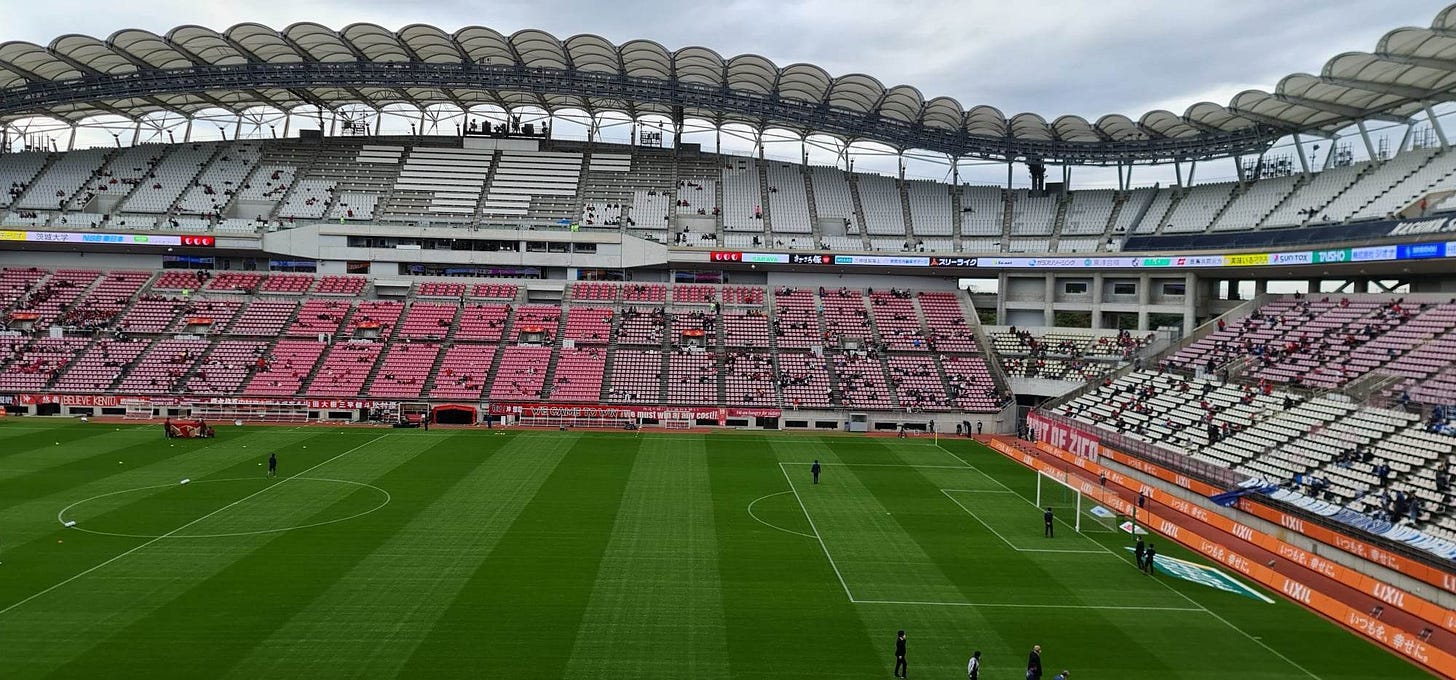This will be a shorter article, I see it as an extended addendum to another post I'm releasing soon! It's about football history, but I think common to even people who've never seen a sphere.
Kashima
Kashima in the Ibaraki Prefecture is a tiny town by almost all metrics (especially from a Japanese perspective). It has an estimated population of 66,197, and is the 440th largest city in Japan. Internationally, that is fewer people than Coffs Harbour in Australia, or roughly the same size as the 140th most populous city in California (Castro Valley). Now, no matter where you live on Earth, generally the best sport teams correspond quite closely with the largest cities. A major city can even have three or more teams from that city, with teams garnering support from different suburbs or sub-demographics. So it’s pretty unusual that the Kashima Antlers are by far the most historically successful J League team. For a city of this size it’s unheard of; for comparison, Castro Valley doesn’t even have professional sports team.
In sum, this isn’t a normal location for a nationally beloved sports team. It’s a quirk of history which ensured the dominance of the Kashima Antlers.
J League Origins
While Japanese football can be traced long back into history, this article will focus on when Japanese football became fully professional. Until 1993 Japanese leagues were semi-professional, which mostly meant footballers were paid like regular people. Often in practice this meant footballers would receive some payment, but not enough to live on. The knock-on effect was that Japanese football was a bit crap, especially compared to other Asian countries who paid their athletes well.
Japan decided that being worse than their Asian peers wasn’t good and set up the professional J1 League. In theory, there was already a semi-professional first division and all those clubs just had to latch on and make minor alterations. In reality, this caused chaos in the semi-professional structure of Japanese football. Instead of welcoming the switch, many clubs realised that they didn’t have the money to pay footballers full salaries.
These first division teams that couldn’t pay full salaries decided to drop down a division and stay semi-professional. It would be great if we could do that with taxes, just decide we’re too poor to pay them and drop down a bracket.
During this time, the Sumitomo Metals Industry Club (SMIC) team (not just a club for metal admiration) were enjoying life in the affordable semi-professional second division. SMIC was a fun company team, built around the Kashima processing town where employees played in their weekend leagues.
A couple things happened at this point which turned SMIC into one of the most important J League teams in Japan today.
Spirit of Zico
First things first, the team decided to sign the already-legendary Brazilian player Zico to help them secure promotion into the first league. Zico is widely regarded as one of the best players ever (voted joint 7th player of the century), but was retired from football and seemingly available to play in second division for a town of 60,000? He was also serving as Minister of Sport for Brazil at the time so I can’t figure out how that negotiation happened.

While Zico didn’t play with the team too long, given he was already retired when signing and very very old, he remained involved with the club and country. His fame meant that other Brazilian players chose to move there. He coached the Kashima Antlers team to win the first ever treble (3 trophies in the same season). He even coached the Japanese National Team in 2006!
Metal club no more: Stepping up to first division
With the formalised professional league, SMIC (along with every other team) were told to change their name to be less corporate. Weirdly, being too corporate was a bad thing for the league, which was itself sponsored as Suntory J1, but maybe they wanted to hog the sponsorship spotlight for themselves. Whatever the case, Kashima shed the unwieldy SMIC name and were named after a local deer shrine.
Despite not finishing first in their previous season, Kashima was promoted to the first league since they were financially stable. They built a new stadium (40,000 capacity, which basically fits the whole town). It was here that they instantly became a team not only neighbours had heard of. Zico was 40, yet led the team in spirit and style to winning the first ever J League season. Global press followed the exploits of the team, fascinated by the underdog story.
Post Zico high
Kashima’s early success and the excitement with Zico meant it became a national and even international sensation overnight. Japanese interest in football grew even greater when they were selected to co-host the 2002 World Cup, with the Antlers’ new stadium chosen as one of the locations. The team became famous as “the House that Zico built”, and still retains a strong Brazilian presence.
Now Kashima Antlers is truly a global franchise being the first Asian team ever to make the Club World Cup Final. While other small town clubs have ups and downs, Kashima is no longer a small club, and have been in the J League ever since Zico’s arrival.
I was lucky enough to watch the Kashima Antlers in action in 2022, with the legendary Zico on premise (but not on field). Read this match day experience if interested!




